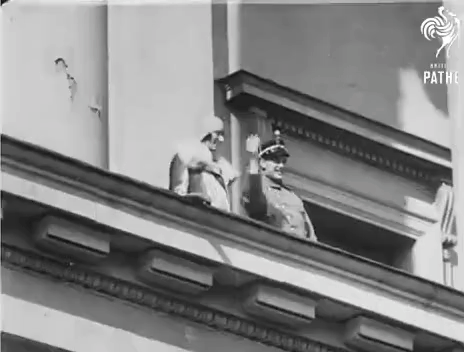

Andrew Morton is still mainly famous for his book about Princess Diana (written with her secret assistance) in 1992, and he’s aiming for similar success with this new biography of Meghan Markle. The tone of the book is uneven and occasionally unpleasant from the start; Morton almost immediately makes it a point to mention, in detail, the kinds of unprincess-like scenes Meghan filmed during her acting career. Although Morton does deem Meghan “empathetic … self-possessed, sophisticated, poised, and charismatic,” he also calls her a “thirsty socialite,” viewing her (and especially her acting career and her previous marriage) through a lens that often comes off as snobbish. Morton also gets emotionally inventive, imagining how Meghan felt at various times in her life, a move I don’t particularly enjoy.
Morton’s style is straight out of the school of British tabloid newspapers, which is often tough for me to tolerate for the length of a newspaper article, let alone an entire book. There’s lots of detail packed in here — much of it sourced from her own writing in The Tig and from interviews with a childhood friend — but honestly, the pacing wasn’t great, and I thought the whole thing was at turns frustrating and dull.
Verdict: If you liked Morton’s Diana book, and if you live for the breathless writing style of the British tabloid press, go for it; otherwise, I’d give it a pass.

Phil Dampier, a freelance journalist who once worked the royal beat for the Sun, is also one of Andrew Morton’s researchers. Dampier took much of the material he dug up during his research and compiled it into this tome, which is actually just a collection of quotations said or written by Harry and Meghan. In theory, I like this idea: it’s nice to hear the news straight from the source. But Dampier uses all of their words, including conversations, articles, interviews, speeches, blog posts, Instagram captions, and even formal press releases, in an equal way, which sometimes feels odd. (A candid conversation isn’t quite the same as a carefully crafted PR statement, for example.)
I mostly wished, though, that Dampier had provided more structure and context for the book. Much of the material seems to be organized by the date it was uttered or published, which means that topics get brought up multiple times, an organizational strategy that feels repetitive at times. And although he’ll offer a phrase or a quick sentence to explain the topic that Meghan or Harry was addressing, fuller context about when and where each quotation was said would have been really helpful in fleshing this out and making it feel like more of a book and less of a list.
Verdict: Virtually all of this material can be found in print or online, so there’s nothing new here, but if you’d like to have all of their statements collected in one place, this could be useful.

The dual biography of Meghan and Harry published by American writer Leslie Carroll is the newest of the bunch, released only yesterday. For my money, it’s also (mostly) the best one written so far. The rush to publish is evident here, as it is in the other books, but Carroll’s style is more pleasant to read, and she offers a much more even presentation of Meghan’s history — she’s not fawning, but she’s also not condescending.
Carroll’s book falters a bit, though, when it comes to the royal background in Harry’s life. The sections on Charles and Diana, as well as other members of the royal family, feel both too rushed and too familiar — there’s nothing new under the sun here. Focusing more on Harry in particular and less on a speedy journey through the usual “War of the Waleses” info would have made his biographical sections feel fresher. The end of the book also feels a little bloated, packed to the brim with every possible bit of speculation about the upcoming wedding. Overall, though, the book is a pleasant read.
Verdict: If you’re going to buy one Meghan and Harry biography, I’d pick this one — but don’t expect too much on the royal history front!






















